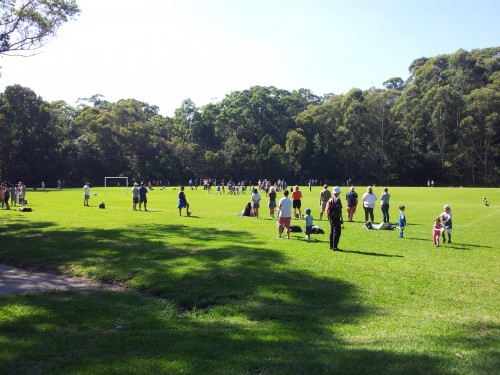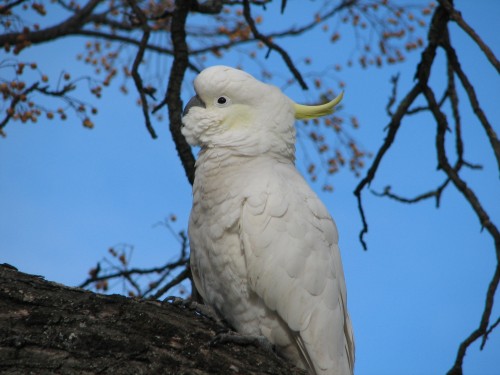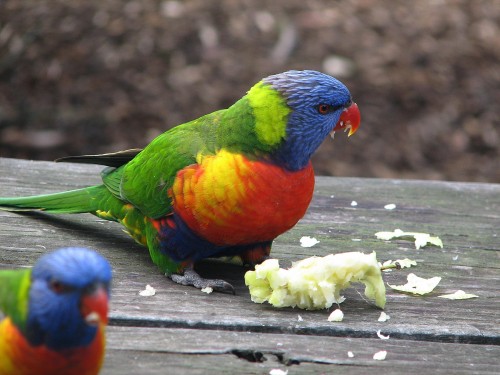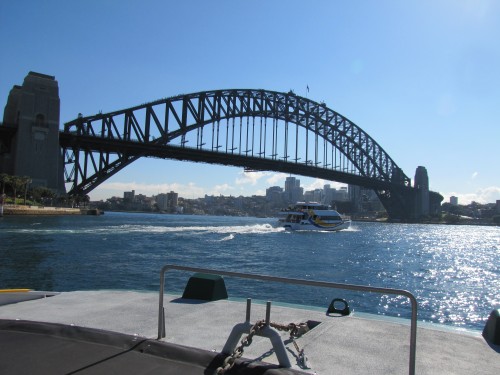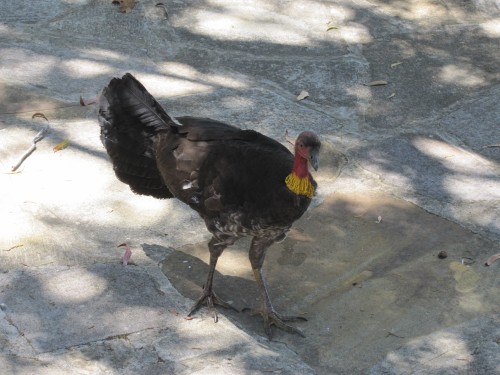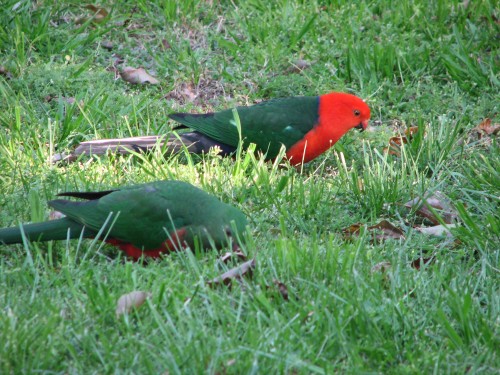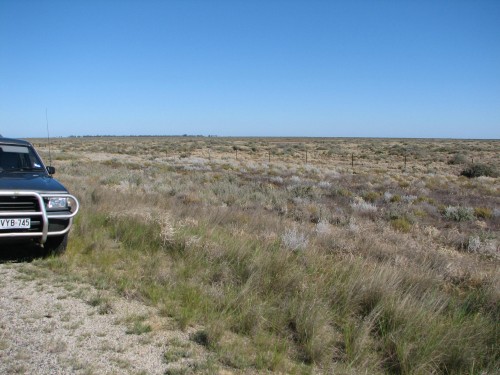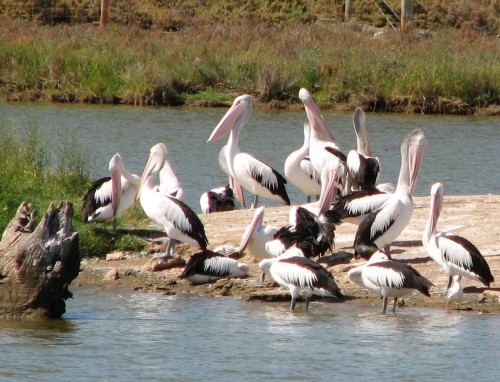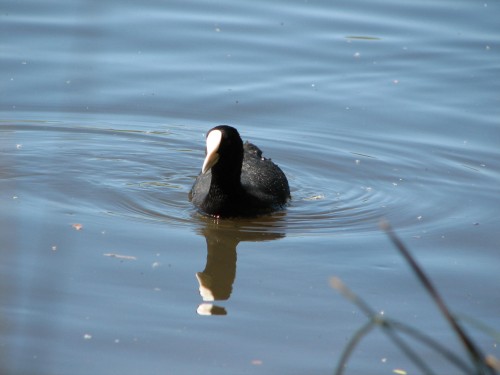A little birding at soccer
We are currently staying with our son and his family in Artarmon, a suburb of Sydney. We try to get over here from Murray Bridge where we live at least once and preferably twice a year. While we are visiting I take every opportunity to do any incidental birding. There are significant differences in the range of bird species present here in Sydney when compared to at home.
On the last two Saturdays, we have had the opportunity to accompany our grandson to watch him play soccer. The photo above was taken with my phone at yesterday’s match. It was held on some pitches in Chatswood West, near the Lane Cove River. The match was a little uneven with my grandson’s team winning 10-0. He scored a goal, hit both upright posts and did a creditable job as the goalkeeper for the second half.
While I managed to mostly keep my eyes on the game from my folding chair, I was aware of some bird activity nearby. There were plenty of Noisy Miners nearby, their constant calling forming a backdrop to the noise of the game. My concentration on the game was tested on occasion when numerous raucous Sulphur-crested Cockatoos came wheeling overhead, landing in the trees surrounding the pitches.
After the game my wife and I found a comfortable garden seat near the playground adjacent to the soccer fields. This area was surrounded by many trees and bushes. While we sat there we were entertained by two Rainbow Lorikeets working at a hollow in a branch of a nearby tree. Within a few minutes a small flock of about 5 or 6 Sulphur-crested Cockatoos came into the same tree, squawking very noisily. The lorikeets vacated the hollow, their protesting screeches making the cockatoos know that they were far from happy. Several of the cockatoos inspected the hollow before leaving it. The hollow would have been too small for the much larger birds.
Other birds seen in the vicinity include:
- Australian Magpie
- Magpie Lark
- Common Myna
- Laughing Kookaburra
- Welcome Swallow
Now for the sad news.
I forgot to take my camera. The above photo was taken with my phone, but taking bird photos requires a much better camera setup than that. Had I remembered to bring my normal camera from home I would have managed to get some great shots of both the lorikeets and the cockatoos. The cockatoos had their yellow crests up on display for much of the time that we observed them. As well as those two species displaying for us, we also had a Laughing Kookaburra flying down to the lawn just in front of us to gobble up a tasty morsel for lunch.
For a moment, I thought I would be able to use my wife’s camera which was in the car. On opening up here camera bag, we found that the batteries were flat, including the spare set. Sigh. We will just have to return there while we are still here. In the meantime, I have included several photos of cockatoos and lorikeets taken elsewhere.
Birding with my grandchildren
I am currently staying with my son and family in Artarmon which is on the North Shore area of Sydney. They live just a few train station stops north of Sydney Harbour Bridge. Only last evening we drove over the bridge, something my son and grandson do every week but it is something special for me. I get to do it only once or twice a year.
Living in Murray Bridge in South Australia, we only get over to Sydney once or twice annually. Because it is over 1300km to drive, a journey which takes two whole days to complete, we only get over here frequently. My son and his family only come over to South Australia once every second year, mainly due to both work commitments and the restrictions of the school year.
While in Artarmon I get few opportunities to go out birding. There are some great birding spots within an hour’s drive or even closer. Lane Cove National Park, for example, is only a ten-minute drive away. Getting away from family is quite difficult, especially seeing our visits usually coincide with school holidays. The grandchildren, ages 7 and 4, are very reluctant to let us leave home, and our car is not set up for young children. On the plus side, even at their tender age they have become aware of the birds they see in their garden, as well as any seen while visiting local parks.
Birding in Artarmon
While we are here the majority of my birding is done from their garden. Fortunately, the neighbourhood has plenty of vegetation, including many large eucalypt trees.
Over the last week I have observed the following birds:
- Rainbow Lorikeets: very common, present in large numbers.
- Australian Ravens: very common, I often see small groups of up to 5 or 6 flying overhead.
- Pied Currawongs: very common, and very noisy – they call throughout the day.
- Laughing Kookaburras: more often heard calling than seen.
- Grey Butcherbirds: common and sometimes very vocal.
- Noisy Miners: this species is the dominant native honeyeater in this area. Very common in large numbers.
- Common Myna: an introduced pest species, becoming more dominant as the years go by.
- Welcome Swallow: common but not seen every day.
- Crested Pigeons: present in small numbers, rarely more than about 4 or 5 in any one location.
- Sulphur-crested Cockatoos: often seen or heard flying overhead, sometimes in flocks up to 40 or 50.
- Rock Doves: not seen regularly in or from the garden, but present in large numbers near the local shops.
- Australian Brush-turkey: I haven’t seen this large bird in or near the garden, but my grandson reports that he often sees one or two in his playground, just under 1km from his home.
Other species not yet seen or heard on this visit, but have been seen during past visits include:
- Tawny Frogmouth
- Galah
- Australian King Parrot
- Australian Magpie
- Willie Wagtail
- Common Blackbird
- Common Starling
- Magpie Lark
Surprising waterbirds of the dry country
Dry Country
I love the dry country we have here in Australia. Most of my birding has been done in areas of Australia which have an average annual rainfall of under 250mm (10 inches). Some of this country is marginal farming country, sometimes cereals, and often sheep and cattle. I grew up on such a farm and still cherish my childhood adventures in the mallee bushland near my home.
On the road again
Earlier this week my wife and I travelled from our home in Murray Bridge, South Australia, to Sydney. We are currently staying with my son and his family. The grandchildren love having us stay with them. At ages 7 and 4 they are already showing an interest in the birds they see in their garden, and in the parks they visit. My interest has rubbed off on them.
Missing out
The car journey from home to Sydney is over 1300km, two long days of driving. In future, we think we might take three or four days to get here, stopping more frequently at the many interesting places along the way. There are many national parks, reserves, botanic gardens and bushland on this route and we just have to drive right on by, often with a groan of despair at what we might be missing.
Hay Plains
One of the places we drive through is the large rural town of Hay, located on the banks of the Murrumbidgee River. The birding along this river can be excellent. But before we get to Hay we have to pass through about 130 kilometres of the Hay Plains, a dry region consisting of few trees, much saltbush and some grassland. I find this drive to be fascinating because it often reveals odd collections of birds. On one trip we saw hundreds of Emus grazing on the low vegetation. On another trip, after heavy rain in that area, we saw thousands of ducks, mostly Australian Wood Duck and Grey Teal. They were taking advantage of the long stretches of water still lying along the edges of the highway.
Surprising Waterbirds
As we travelled along at 110kph my wife suddenly pointed out an interesting sight. It was a gathering of dozens of waterbirds: Australian Pelicans, White Ibis, Straw-necked Ibis and Yellow-billed Spoonbills. Harassing all of them from only several metres overhead was a Swamp Harrier. As we rushed by I didn’t have time to take in the presence of any other birds. I am sure that if we had had the time to stop, I would have recorded several species of ducks, perhaps coots, swamphens, egrets, herons and lapwings, cormorants, and maybe even some crakes and rails.
Irrigation
This was a very surprising collection of birds for what is essentially very dry country. The reason for their presence is explained by the presence of wide irrigation channels. The water is pumped from the nearby Murrumbidgee River into a series of channels, some of which are 5 or more metres wide. The water is then used to either flood irrigate large expanses of land, or pumped through long, overhead sprinkler systems. This area grows large amounts of hay, wheat and cotton, all irrigated from the channels. The fact that this also provides a perfect environment for numerous birds is a pleasant by-product. Further east there are large expanses of fruit orchards as well.
Further reading:
- Australian Pelicans overhead
- White Ibis at Dubbo Zoo
- Straw-necked Ibis Adelaide Zoo
- Yellow-billed Spoonbills and the birth of a birder
